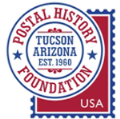
Why support the Postal History Foundation?
Think old.

The Postal History Foundation preserves postal history, including stamps, envelopes (“covers”), postcards, photographs, catalogs, postal equipment, manuals, and United States Postal Service publications. Items are curated and cataloged and many are accessible on-site, and can be found through finding aids. Researchers and guests can learn from these artifacts through study, while they are on display in various rotating and permanent exhibits, and, in some cases, online as digital displays. Many of our items are rare, even one-of-a-kind. We take seriously the responsibility of preserving and making accessible these papers and artifacts, employing best practices from the fields of archives, librarianship, and museums, to best care for the items in our custody.
Learn more about our collections here.
Think young.

Education, particularly youth education, is one of our most important services.
We provide classroom support with lessons, stamps, field trips, and guest speakers. Organizations from all over the country order lessons and stamps to share with children.
We reach over 14,000 students annually nationwide. Approximately 500,000 stamps are distributed by education each year. And, while we do teach students about stamps and stamp collecting, we also teach all subjects with and through stamps.
Learn more about our Stamp Discovery Education Program here.
Think now.

The Postal History Foundation provides resources for philatelists (stamp collectors) and the community. Our library and archives contain approximately 30,000 titles, including books, catalogs, journals, maps, and ephemera that are available to the public. Our philatelic store is one of the best in Tucson; we normally have in stock a variety of stamps, covers, and postcards. We also sell online! Our contract post office is frequented by our neighbors, fellow Tucsonans, and guests to the Foundation. Our post office is one of the few in the area that offers a broad range of USPS stamps of interest to collectors.


















































